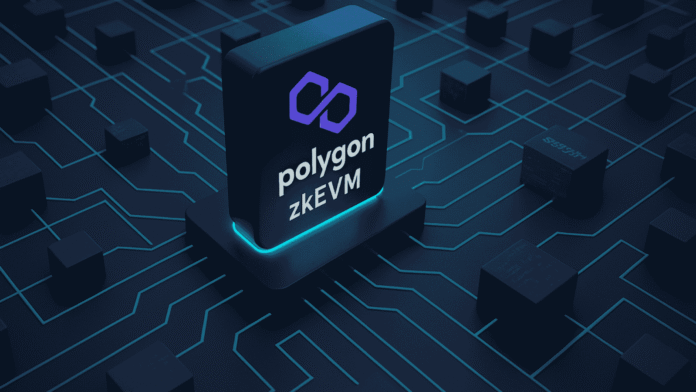In a remarkable showcase of next-gen blockchain scalability, Polygon’s zkEVM rollup processed a record-breaking 8.5 million transactions in a single day, according to on-chain data published on July 23, 2025. This historic milestone not only highlights the growing efficiency of zero-knowledge (ZK) rollups but also solidifies Polygon’s position as a leading infrastructure provider in the rapidly expanding Layer-2 ecosystem.
With Ethereum’s mainnet facing continued congestion and high fees, zkEVM-based solutions are increasingly seen as the path forward for scalable, secure, and cost-effective decentralized applications. Polygon’s latest performance benchmark suggests that ZK rollups are no longer just theoretical—they’re production-ready and scaling fast.
A Closer Look at the Record Day
The 8.5 million transaction record reflects surging activity across DeFi, NFT minting, on-chain gaming, and social dApps that have migrated to Polygon zkEVM for lower gas fees and faster finality.
- Average transaction fee: $0.003
- Block time: ~2 seconds
- Finality confirmation on Ethereum: <10 minutes
- Total daily active users (DAU): Over 1.6 million
This level of throughput puts Polygon zkEVM ahead of other major Layer-2s such as Arbitrum, Optimism, and Base for the day and even exceeds the transaction count on some Layer-1 chains, including Avalanche and Fantom.
Polygon Labs attributes the spike in part to a successful airdropped gaming campaign by MetaNova (a web3 MMO), a cross-chain NFT launch via Magic Eden, and large-scale liquidity migrations from Ethereum mainnet.
Why zkEVM Matters
zkEVM (zero-knowledge Ethereum Virtual Machine) technology is considered the gold standard for Layer-2 scalability. Unlike optimistic rollups, which rely on fraud proofs and a challenge period, zkEVMs use zero-knowledge proofs to cryptographically verify the correctness of transactions—resulting in faster finality, better security, and lower latency.
Polygon’s zkEVM is notable because it is fully EVM-compatible, allowing developers to port existing Ethereum dApps without rewriting code. This has significantly lowered the barrier to migration, leading to a surge in ecosystem growth.
Moreover, zkEVM advances Ethereum’s long-term roadmap by bringing near-infinite scalability while preserving decentralization and censorship resistance.
Ecosystem Growth and Adoption
Polygon zkEVM now supports more than 250 dApps, including leading DeFi platforms like Aave, Quickswap, and Balancer, as well as new-generation projects in real-world assets (RWAs), gaming, and social media.
Notably, projects like:
- Lens Protocol migrated its “Momoka” social layer to zkEVM for performance gains
- Centrifuge launched tokenized invoice factoring dApps for SMEs
- Arcade Network introduced zero-fee esports tournaments powered by zk settlements
These real-use cases underscore the maturation of the ecosystem beyond speculative DeFi into functional, multi-vertical applications.
In addition, zkEVM is drawing increasing interest from enterprise partners. Mastercard Labs, Deutsche Telekom, and an unnamed Asian logistics conglomerate are reportedly testing pilot integrations on the network, according to sources close to Polygon Labs.
Developer and Network Stats
- TVL on Polygon zkEVM: $3.1 billion (up 52% in last 60 days)
- Total smart contracts deployed: 19,700+
- GitHub contributors: 412 active developers in July
- Bridged assets: $1.2 billion in ETH, USDT, and wBTC from mainnet
Polygon has also upgraded its prover system to a Plonky3-based recursive proof, reducing the cost of finalising blocks on Ethereum and improving proof generation speed by 4x. These technical improvements have enabled higher throughput without sacrificing decentralization or composability.
Competitive Landscape: Ahead in the ZK Race?
While other players like zkSync, Scroll, and StarkNet are also advancing zero-knowledge solutions, Polygon’s zkEVM is gaining recognition for being the most production-ready and adopted.
Unlike zkSync’s zkPorter model or Scroll’s testnet status, Polygon zkEVM has successfully demonstrated:
- Full EVM bytecode compatibility
- Cross-chain liquidity integration
- Multichain deployment with native bridge tools
Analysts at Delphi Digital and Messari have labelled Polygon zkEVM as the “first real contender” for Ethereum’s rollup-centric roadmap, due to its developer tooling, user experience, and real-world dApp success.
What’s Next?
Polygon Labs is preparing to introduce zkEVM v2, which will feature:
- Native account abstraction support
- Built-in privacy layers for compliant DeFi
- zkID—Polygon’s self-sovereign identity module for on-chain KYC
- Integration with Polygon CDK for launching custom zk chains (appchains)
Meanwhile, the Polygon 2.0 upgrade, slated for Q4 2025, will unify Polygon’s PoS chain, zkEVM, and Supernets into a single cross-chain protocol powered by the upgraded POL tokenomics model.
This will allow developers to launch modular rollups with shared liquidity and fast finality under a unified framework—a vision that could shape the next decade of Ethereum scalability.
Final Thoughts: Scaling Beyond the Hype
Polygon zkEVM’s record-breaking 8.5 million daily transactions prove that zero-knowledge technology is no longer a theoretical promise—it’s delivering today. As more dApps, users, and enterprises migrate to faster, cheaper chains, Polygon stands at the forefront of Ethereum’s scalable future.
With technical innovation, real adoption, and developer momentum all converging, Polygon’s zkEVM isn’t just leading the Layer-2 race—it’s redefining what’s possible on Ethereum.




